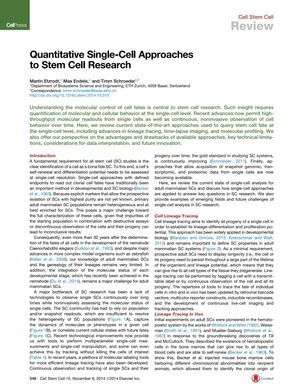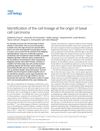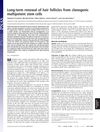Quantitative Single-Cell Approaches to Stem Cell Research
November 2014
in “
Cell Stem Cell
”

TLDR New single-cell analysis techniques are improving our understanding of stem cells and could help in treating diseases.
The document from 2014 reviewed the state-of-the-art single-cell analysis techniques in stem cell research, emphasizing the challenges due to stem cell heterogeneity and the limitations of traditional methods. It discussed the importance of continuous, noninvasive observation of single stem cells, advancements in high-throughput molecular readouts, and the need for improved imaging and tracking technologies. The document highlighted the use of live-cell imaging, transgenic reporter strains, RNA imaging, and protein secretion profiling for functional studies, while noting the technical difficulties in live-cell in vivo imaging. It also covered the progress in single-cell molecular profiling, including microfluidic devices, flow cytometry, hyperspectral cytometry, mass cytometry, single-cell proteomics, and single-cell sequencing technologies. These advancements are enhancing our understanding of stem cell biology, despite the high costs and lack of commercial analysis tools. The document concluded that integrating single-cell quantification with computational and high-throughput approaches is essential for deciphering stem cell systems and tissue development, with implications for clinical applications in reproductive medicine and cancer treatment.


